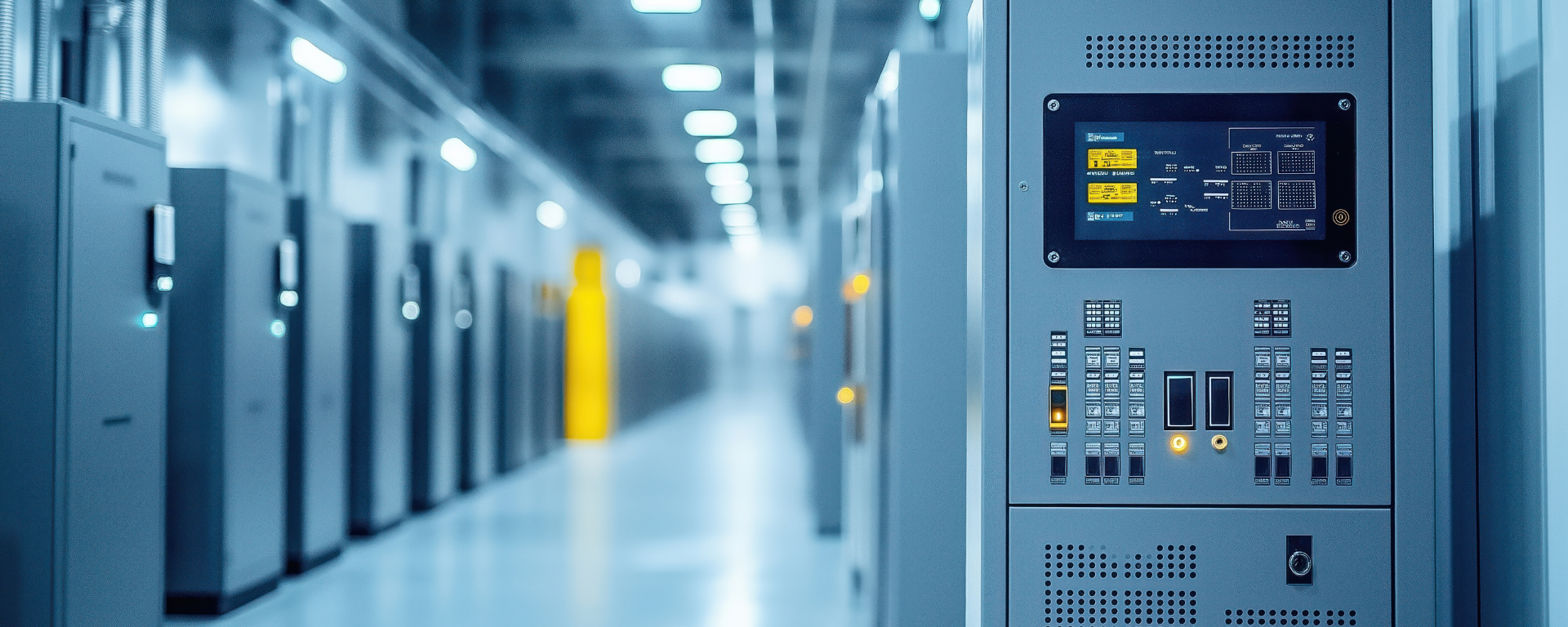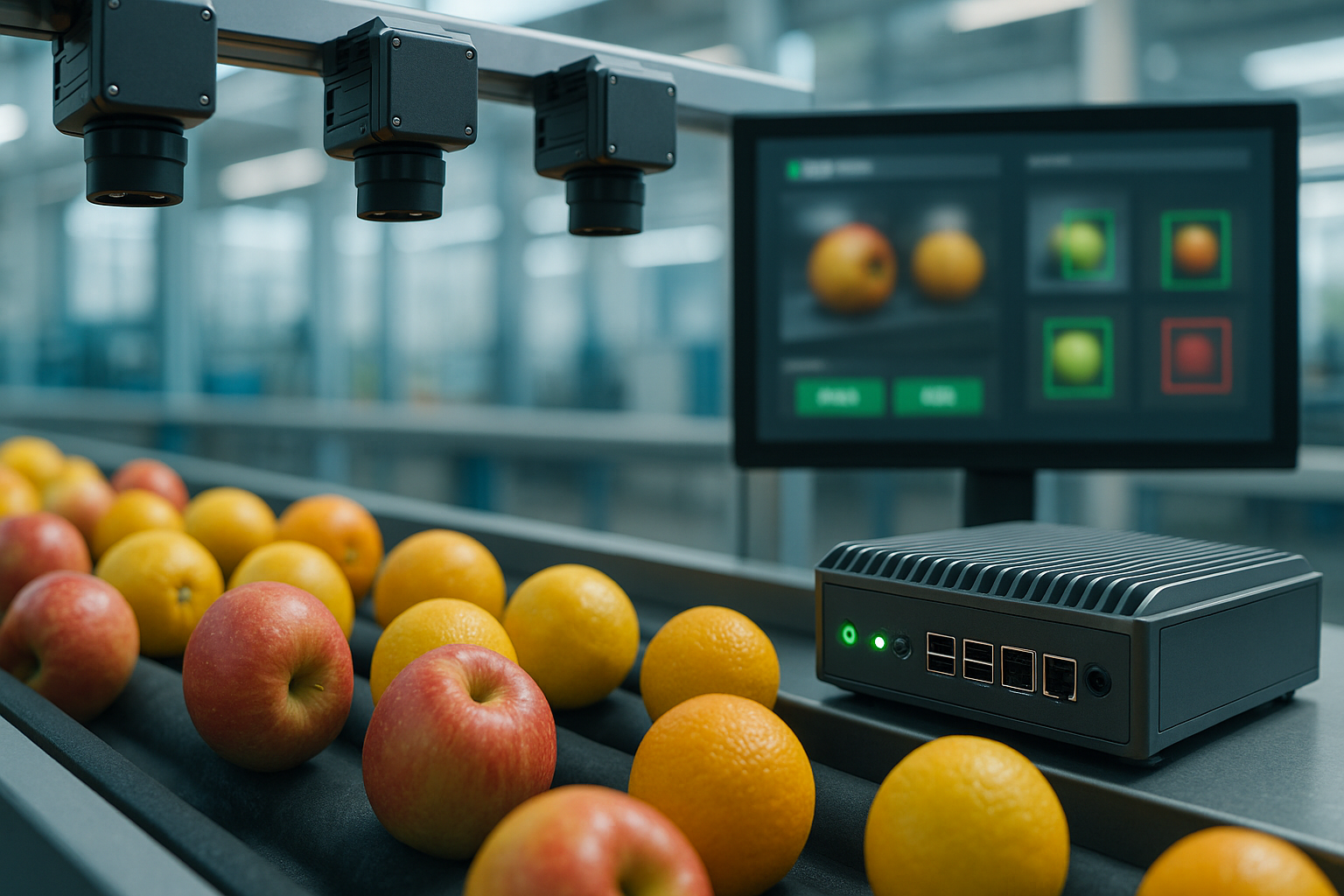
Enabling DCIM Success
Our product solutions specialize in industrial-grade connectivity and infrastructure. Unlike other DCIM software vendors, we provide the foundational hardware that enables effective DCIM. Our value proposition is built on three pillars: enabling comprehensive OT data acquisition, delivering industrial-grade reliability for harsh environments, and championing a proactive, standards-based approach to cybersecurity.

Maximize Uptime
Proactively identify and resolve issues before they cause unplanned downtime.
Optimize Costs
Gain insights into energy use to reduce waste and avoid peak demand penalties.
Rapid Root-Cause Analysis
Quickly diagnose power anomalies to prevent recurrence and mitigate risks.

Engineered Solutions for Your Unique Challenges

Enabling OT Data Acquisition
Our role is the hardware foundation that collects and transmits OT data. From EPMS and BMS to SCADA systems, our devices unify data from legacy protocols (such as Modbus RTU) and convert it into modern formats (such as Modbus TCP or SNMP). This enables seamless integration into DCIM platforms for complete visibility across the facility.
Reliability in Harsh Environments
Ensuring uninterrupted operations in modern data centers is non-negotiable. Even brief network failures can disrupt real-time monitoring systems, delay responses, and result in significant downtime costs. These risks are especially pronounced in challenging areas, such as electrical rooms and grey spaces, where environmental conditions can compromise equipment reliability. We address this by engineering our connectivity solutions with industrial-grade resilience, ensuring your critical infrastructure remains online, stable, and secure, even in the harshest conditions.


Security – Safeguarding OT Infrastructure
As OT and IT converge, our solution safeguards critical systems with a layered defense. Built to IEC 62443 standards, it features strong authentication, secure protocols, and network segmentation with firewall, NAT, and VPN—backed by proactive monitoring and rapid security updates.

Monitoring Data Center Infrastructure With One Integrated Network
Recommended Products
%20%20Moxa.jpg)
EDS-G4014 Series
2.5Gbe Ready Full Gigabit Managed Switches
→View product info

ioLogik E1200 Series
Ethernet Remote I/O
→View product info
.jpg)
UC-8100A-ME-T Series
Advanced Edge-to-Cloud Cellular Computers
→View product info

MGate MB3170/3270 Series
1 and 2-port advanced serial-to-Ethernet Modbus gateways
→View product info
Industry Certifications
.png)

.png)
The most common questions
How do Moxa MGate gateways help a Data Center overcome the challenge of integrating diverse Operational Technology (OT) equipment that uses disparate communication protocols?
Data centers inherently face a significant challenge in integrating their diverse Operational Technology (OT) equipment. This includes numerous pieces of electrical equipment, such as power meters, PDUs, ATS, and switch gears, as well as environmental control systems like HVAC and CRAC units, many of which traditionally rely on serial-based industrial protocols, such as Modbus RTU (RS-422/485). In contrast, modern Building Management Systems (BMS) and Electrical Power Management Systems (EPMS) often operate on Ethernet-based protocols, such as Modbus TCP/IP or BACnet/IP.
Moxa’s MGate series protocol gateways are specifically designed to bridge this communication gap, effectively acting as “translators” between these different protocols.
•The MGate MB3000/MB3660 Series is essential for converting Modbus serial (RTU/ASCII) to Modbus TCP/IP, allowing seamless data collection from a wide range of devices (e.g., power meters, PDUs, ATS, generators) to your EPMS or BMS networks.
• For integrating cooling and HVAC systems, which commonly use BACnet, the MGate 5217I Series facilitates BACnet/IP to Modbus RTU conversion, ensuring that these critical environmental data points can be incorporated into the BMS network.
• Moxa also offers other specialized MGate models, like the MGate 5118/5119/5121/5122/5123 series for protocols such as CAN-J1939 (often found in generators) or IEC 61850 MMS, which are essential for comprehensive power grid integration.
By providing these protocol conversion capabilities, Moxa solutions help to efficiently acquire equipment data and unify data streams from numerous monitoring nodes into a single integrated network for Data Center Infrastructure Management (DCIM). This approach simplifies the overall system integration process, which can otherwise be “lengthier and more laborious” involving extensive system reconfiguration, testing, and troubleshooting.
What are the primary challenges in DCI that Moxa solutions address?
Data centers face several key challenges, particularly as they expand and strive for increased energy efficiency and uninterrupted service. Moxa’s solutions address three major issues in DCI operations:
Device Level: Efficiently acquiring data from a substantial amount of diverse OT equipment, many of which are serial-based (e.g., Modbus RTU).
Information Level: Ensuring uninterrupted transmission of critical data for real-time monitoring, despite potential electrical interferences or environmental factors like high temperatures and vibrations.
Control Level: Reducing response times between OT equipment and upper-layer IT systems to optimize energy management efficiency and handle increasing network complexity due to IT-OT convergence and growing connected devices.
What types of Moxa products are commonly used in DCI and DCIM solutions?
Moxa offers a comprehensive portfolio of industrial-grade products for DCI applications:
Protocol Gateways: Essential for converting serial protocols (like Modbus RTU/ASCII) to Ethernet-based protocols (like Modbus TCP/IP and BACnet/IP). Examples include the MGate MB3000 Series (MB3170, MB3660) and MGate 5217I Series.
Ethernet Switches: Provide reliable network connectivity with redundancy features and industrial certifications. This includes EDS Series (EDS-4000/G4000, EDS-408A, EDS-518E/528E), MDS Series, and PT Series switches.
Industrial Computers: Used for SCADA and control-level applications, offering high I/O density and reliability. Examples include DA Series (DA-720, DA-681Ax86) and MPC Series.
Remote I/O: For monitoring relay status and other system end devices. Such as ioLogik E1200 Series and ioThinx 4510 Series.
Serial Device Servers: Connect serial devices to Ethernet networks, such as the NPort Series (NPort 5000, NPort 6650 Series).
Secure Routers/Firewalls: Such as the EDR-G9010 Series, for network segmentation and secure remote access.
Network Management Software: For centralized visibility and control over network infrastructure, such as MXview One Series.
How does Moxa's network management software contribute to DCI operations?
Moxa's network management software, such as MXview, plays a significant role in enhancing DCI operations by providing crucial visibility and control over the network infrastructure. MXview contributions include:
High Visibility: Provides an overview of network device security settings and offers visibility into the OT/IT network topology, facilitating an understanding of the network structure and identifying potential issues.
Accelerated Troubleshooting: By providing data packet-level visibility, the software enables the quick identification and resolution of network problems, thereby minimizing downtime.
Early Detection of Abnormalities: The software aids in the early detection of equipment abnormalities by monitoring network performance and device status.
Overall, the network management software helps maintain high data transmission reliability and improve the efficiency of collecting OT equipment data.
How do Moxa products ensure reliability and efficiency in data centers?
Moxa products are designed with industrial-grade features to ensure high reliability and efficiency. Key features include:
Rugged Design: They are built to withstand harsh environments, including electromagnetic interference (EMI) resistance (Level 4 EMS protection), wide operating temperature ranges (- 40 to 75°C), and resistance to shaking or vibration.
Network Redundancy: Moxa offers various redundancy protocols to prevent downtime and ensure millisecond-level recovery, such as Turbo Ring (<20 ms recovery for Fast Ethernet, <50 ms for Gigabit Ethernet), Turbo Chain (enables unrestricted, flexible topology expansion), STP/RSTP, and PRP/HSR (provides zero-delay, zero-loss recovery).
Dual Power Inputs: Many devices support dual power supply backup to prevent interruptions in case of a power source failure.
Ethernet Cascading: Supported by Ethernet gateways and I/Os, this feature simplifies wiring and deployment, saving time and costs, especially for high-density connections like PDUs.
High Port Density: Modbus gateways and other devices offer high port density, which simplifies data transmission from numerous field devices.
What cybersecurity features do Moxa products offer for DCI OT networks?
Moxa emphasizes cybersecurity by design and holds certifications like IEC 62443-4-1 (for secure development lifecycle) and IEC 62443-4-2 (for products). Key security features include:
Strong Encryption: Support for algorithms such as DES/3DES/AES (AES-128, AES-256, SHA-256) for highly secure data transmissions.
Secure Protocols: Use of HTTPS (TLS 1.2) and SNMPv3 for secure management and data transfer.
Authentication and Access Control: Features like user authentication mechanisms, IEEE 802.1X for port-based authentication, and trusted access to allow connections only from assigned IP addresses.
Secure Boot: Helps ensure the integrity of networking devices.
Network Segmentation: Achieved through features like VLANs and firewalls, dividing the network into isolated zones to contain threats.
Industrial IPS/IDS and Deep Packet Inspection (DPI): To identify and contain threats within specific areas and examine industrial protocol data.
Proprietary Operating System (MOS): Used in some devices, which can reduce the risk of malware attacks compared to standard or open-source operating systems.
Traffic Storm Control and QoS: To prevent network flooding and prioritize critical data, mitigating denial-of-service risks.
Vulnerability Management: Proactive approach to protect products from security vulnerabilities and manage risks.









